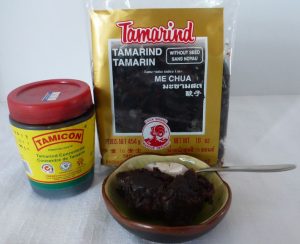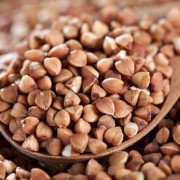Every Day Gluten-Free Gourmet Teaches Us About Thai Food

Cinde Little writes the Everyday Gluten Free Gourmet food blog and teaches cooking classes in Calgary, Alberta where she lives with her husband. Her son is currently attending the University of Victoria. Cinde became interested in gluten free cooking in 2009 after a friend was diagnosed with celiac disease. As a passionate home cook she encourages everyone to just get in the kitchen and cook. Food restrictions are real and learning to accommodate them is an important skill. Visit www.everydayglutenfreegourmet.ca or follow her on social media:
• Blog
• Instagram
• Facebook
• Twitter
• cinde@everydayglutenfreegourmet.ca
In the twenty years since my husband and I visited Thailand, Thai cuisine has become popular in North America. And why wouldn’t it be? Just the mention of Thailand conjures up images of tantalizing Thai curries, spicy Tom Yam soup, noodle-filled salad rolls bursting with fresh herbs and that pungent nuoc cham dipping sauce.
 Did you know that Thai food is often gluten free?
Did you know that Thai food is often gluten free?
Well it is and that is a bonus for every home cook. For those who eat and cook gluten free Thai food offers an amazing array of flavours that can transport you across the globe in one bite. For family and friends who simply enjoy cooking it also creates numerous gluten free options for entertaining and accommodating those on a restricted diet.
The Unique Flavours of Thai Cuisine
Thai cuisine uses chile, garlic, lemongrass, fish sauce, palm sugar and lime to balance the sweet and the sour with the hot and the salty. The unique combination of these ingredients creates a harmonious layering of flavour upon flavour rot chart – the heart and soul of true Thai cuisine.
An Introduction to Thai Ingredients
A well-stocked pantry is the key to cooking a variety of delicious homemade meals day after day. Just a few minutes of planning will pay off every time you cook and shop. Whether you are whipping up a quick dinner or planning something more adventurous a well-stocked pantry makes life in the kitchen more enjoyable.
Thai ingredients are readily available in Chinese and Asian grocery stores as well as supermarkets with an extensive Asian section. They are all naturally gluten free but as always…read the label.
CILANTRO – Readily available fresh this is the preferred way to use cilantro although it is also sold dried and in a paste. Cilantro is sometimes called Chinese parsley. Fresh cilantro can be chopped and frozen. In Thai cooking the stems of the cilantro are often used to make curry paste. The dry seed of the plant is sold whole or ground and is generally called coriander in this form.
 COCONUT MILK – Considered the milk of Southeast Asia, coconut milk is indispensable in most Asian cuisines. It is made by steeping grated coconut in warm water then straining it through cheesecloth. Coconut milk is not the same as coconut water, the liquid from inside a fresh coconut. Available in cans in grocery stores coconut milk is often less expensive in Chinese and Asian shops. Shake well before opening and stir before pouring. Fat content and taste varies among brands.
COCONUT MILK – Considered the milk of Southeast Asia, coconut milk is indispensable in most Asian cuisines. It is made by steeping grated coconut in warm water then straining it through cheesecloth. Coconut milk is not the same as coconut water, the liquid from inside a fresh coconut. Available in cans in grocery stores coconut milk is often less expensive in Chinese and Asian shops. Shake well before opening and stir before pouring. Fat content and taste varies among brands.
 CURRY PASTE – Many varieties are available in Asian markets sold in plastic tubes and squeezable packages. Curry paste is a combination of spices and herbs so should be naturally gluten free. Cock brand curry paste comes in yellow, red, green and more. At the time of writing Cock brand curry pastes are all gluten free.
CURRY PASTE – Many varieties are available in Asian markets sold in plastic tubes and squeezable packages. Curry paste is a combination of spices and herbs so should be naturally gluten free. Cock brand curry paste comes in yellow, red, green and more. At the time of writing Cock brand curry pastes are all gluten free.
 FISH SAUCE – Called nam pla in Thai and nuoc mam in Vietnamese. This is the ubiquitous Thai and Vietnamese condiment used in almost every dish, just as salt and soy sauce are used in other cultures. Completely natural, it is the clear, amber-coloured liquor that runs off when small fish are packed in wooden barrels with salt and fermented for a few months. Some brands are saltier than others so always taste your finished dish and adjust accordingly. Fish sauce keeps indefinitely without refrigeration.
FISH SAUCE – Called nam pla in Thai and nuoc mam in Vietnamese. This is the ubiquitous Thai and Vietnamese condiment used in almost every dish, just as salt and soy sauce are used in other cultures. Completely natural, it is the clear, amber-coloured liquor that runs off when small fish are packed in wooden barrels with salt and fermented for a few months. Some brands are saltier than others so always taste your finished dish and adjust accordingly. Fish sauce keeps indefinitely without refrigeration.
Vegan? Here is a homemade recipe for a LINK fish sauce substitute that works well.
GALANGAL – Also called laos root, galangal is botanically part of the ginger family. Fresh galangal has a mustard-like, piney taste and is much hotter than ginger. It can be difficult to find fresh but is available frozen (whole, like a piece of gingerroot) and dried (in slices).
LEMONGRASS – Long stalks that look like gray-green, woody scallions. The bulb-like base of the stalk is used, sliced or coarsely shredded. Common in Thai, Vietnamese and Indonesian cuisines. Also available in packages of dried pieces, dry powder or finely grated/chopped and frozen. I like the convenience of frozen lemongrass. Substitute 1 tablespoon of frozen lemongrass for 1 lemongrass stalk.
SHRIMP PASTE – Called terasi in Indonesian and kapi in Thai. This pungent smelling paste is made from fermented shrimp. Like fish sauce it is an essential contributor to the unusual flavours of Thai cuisine.
 TAMARIND – It has an unusual sour flavour which lends a unique taste to both sweets and curries. The seeds from this Asian pod are usually made into a concentrate or packed like dates, shelled but still containing some fibres and seeds. For the concentrate; use 1 part concentrate to 2 parts water. For the packaged tamarind pour boiling water over the pulp (2 parts water to 1 part pulp), stir then push through a sieve to get a paste. This can then be frozen in small amounts for future use.
TAMARIND – It has an unusual sour flavour which lends a unique taste to both sweets and curries. The seeds from this Asian pod are usually made into a concentrate or packed like dates, shelled but still containing some fibres and seeds. For the concentrate; use 1 part concentrate to 2 parts water. For the packaged tamarind pour boiling water over the pulp (2 parts water to 1 part pulp), stir then push through a sieve to get a paste. This can then be frozen in small amounts for future use.
THAI BASIL – Fresh Thai basil is distinctively different from European basil so should not be substituted. Thai basil comes in many varieties. Substitute fresh cilantro in cooked dishes or fresh mint in salads if Thai basil is not available. The taste will be different but you will have a more authentic Thai flavour. In the spring several varieties of Thai basil are sold at garden centers so buy some for your patio or garden.
 THAI CHILES – Also called bird chiles these are small and fiery hot. Can be frozen and used right from the freezer. You may want to wear gloves when seeding and chopping chiles. Substitute jalapeno or serrano chiles according to your taste. Some Thai cookbooks suggest using four times the amount to get the same intensity of heat. I suggest starting with an equal amount and adjust from there.
THAI CHILES – Also called bird chiles these are small and fiery hot. Can be frozen and used right from the freezer. You may want to wear gloves when seeding and chopping chiles. Substitute jalapeno or serrano chiles according to your taste. Some Thai cookbooks suggest using four times the amount to get the same intensity of heat. I suggest starting with an equal amount and adjust from there.

















